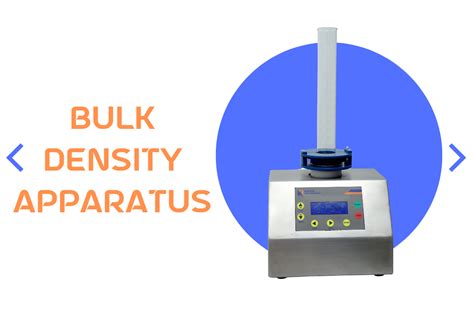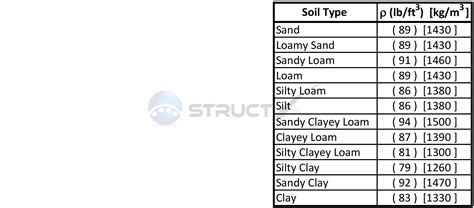density of compacted and excavated soil *Weight of material varies with moisture content, grain size, degreee of compaction, etc. Tests must be made to determine exact material characteristics. . See more Used 24" Mini-Excavator Bucket for John Deere 27D - John Deere Wedge (John Deere)
0 · why is bulk density important
1 · typical density of soil
2 · typical bulk density of soil
3 · soil compaction chart
4 · soil bulk density chart
5 · how to reduce soil compaction
6 · how to determine bulk density
7 · calculate bulk density of soil
China leading provider of Excavator Rubber Tracks and Agricultural Rubber Tracks, Shanghai Puyi Industrial Co., Ltd. is Agricultural Rubber Tracks factory.
Calculating appropriate volume is critical to accuracy. In-bank soil, loose soil that has been excavated and fill soil that has been compacted, have different material densities and resulting load factors. See moreCalculating appropriate volumes is critical to accuracy. In-bank soil, loose soil that has been excavated and fill soil that has been compacted, have different volumes . See moreBank Cubic Yards (BCY)/Bank Cubic Meters (BCM): Material as it lies in its natural bank state. Loose Cubic Yards (LCY)/Loose Cubic Meters (LCM): Material . See more*Weight of material varies with moisture content, grain size, degreee of compaction, etc. Tests must be made to determine exact material characteristics. . See more
Learn how to calculate the volume and weight of moist and dry granular materials using bulking factor and bulk density. Find tables of typical values for different types of soils, rocks, and . Find the density of clay and other materials in pounds per cubic foot and kilograms per cubic metre. Compare the densities of dry, moist, and wet clay with other dirt and mud types.Learn about soil compaction, the method of mechanically increasing the density of soil, and its importance in construction. Find out how to identify and classify different soil types, and the .Learn about soil compaction, the densification of soils by removal of air through mechanical energy. Find out how to perform Proctor tests, plot compaction curves and zero air void .

Learn how to measure the in-situ density of soil using the sand replacement method. The in-situ density is the weight of the excavated soil divided by the in-situ volume, and it is used to .Learn how to measure and interpret soil bulk density, a dynamic property that reflects the compactness and porosity of soil. Find out how bulk density varies with texture, organic .Learn what soil bulk density is, how to measure it using core or excavation methods, and how to calculate relative bulk density as an index of soil compaction. Find out the factors that affect .Learn how to use sand replacement method to measure the dry density of soil in situ. The test involves excavating a hole, filling it with sand, and weighing the sand and the soil.
Learn about the concepts, methods and principles of soil compaction in civil engineering and construction. See examples of standard and modified Proctor tests, and how to measure and .Find the density of soil in kg/m3 for different types of soil, such as clay, sand, gravel, and earth, in loose and bank conditions. Compare the load factors and volume calculations for excavation and compaction.
Learn how to calculate the volume and weight of moist and dry granular materials using bulking factor and bulk density. Find tables of typical values for different types of soils, rocks, and quarry products. Find the density of clay and other materials in pounds per cubic foot and kilograms per cubic metre. Compare the densities of dry, moist, and wet clay with other dirt and mud types.Learn about soil compaction, the method of mechanically increasing the density of soil, and its importance in construction. Find out how to identify and classify different soil types, and the best compaction methods and techniques for each type.Learn about soil compaction, the densification of soils by removal of air through mechanical energy. Find out how to perform Proctor tests, plot compaction curves and zero air void curves, and understand the factors affecting compaction.
Learn how to measure the in-situ density of soil using the sand replacement method. The in-situ density is the weight of the excavated soil divided by the in-situ volume, and it is used to control the compaction of soil or pavement layers.Learn how to measure and interpret soil bulk density, a dynamic property that reflects the compactness and porosity of soil. Find out how bulk density varies with texture, organic matter, depth and management.Learn what soil bulk density is, how to measure it using core or excavation methods, and how to calculate relative bulk density as an index of soil compaction. Find out the factors that affect soil bulk density and the reference values for optimal crop and tree growth.
Learn how to use sand replacement method to measure the dry density of soil in situ. The test involves excavating a hole, filling it with sand, and weighing the sand and the soil.Learn about the concepts, methods and principles of soil compaction in civil engineering and construction. See examples of standard and modified Proctor tests, and how to measure and plot moisture-density relations.Find the density of soil in kg/m3 for different types of soil, such as clay, sand, gravel, and earth, in loose and bank conditions. Compare the load factors and volume calculations for excavation and compaction.
Learn how to calculate the volume and weight of moist and dry granular materials using bulking factor and bulk density. Find tables of typical values for different types of soils, rocks, and quarry products. Find the density of clay and other materials in pounds per cubic foot and kilograms per cubic metre. Compare the densities of dry, moist, and wet clay with other dirt and mud types.Learn about soil compaction, the method of mechanically increasing the density of soil, and its importance in construction. Find out how to identify and classify different soil types, and the best compaction methods and techniques for each type.Learn about soil compaction, the densification of soils by removal of air through mechanical energy. Find out how to perform Proctor tests, plot compaction curves and zero air void curves, and understand the factors affecting compaction.
ff industrial ff-12 mini excavator
Learn how to measure the in-situ density of soil using the sand replacement method. The in-situ density is the weight of the excavated soil divided by the in-situ volume, and it is used to control the compaction of soil or pavement layers.Learn how to measure and interpret soil bulk density, a dynamic property that reflects the compactness and porosity of soil. Find out how bulk density varies with texture, organic matter, depth and management.Learn what soil bulk density is, how to measure it using core or excavation methods, and how to calculate relative bulk density as an index of soil compaction. Find out the factors that affect soil bulk density and the reference values for optimal crop and tree growth.
Learn how to use sand replacement method to measure the dry density of soil in situ. The test involves excavating a hole, filling it with sand, and weighing the sand and the soil.
why is bulk density important
typical density of soil
typical bulk density of soil

cotton spare part manufacturers/supplier, China cotton spare part manufacturer & .
density of compacted and excavated soil|how to determine bulk density